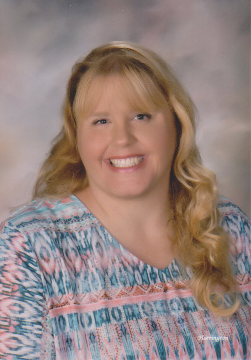Best Practices on organizing paper backup for donations
With RE, we often have multiple batches for each gift report, and we’re not sure how to organize the paper copies so that we can find it later. We’re curious how other organizations handle this. I’ve spent some time looking through other entries in this forum, and can’t seem to find any mention of this process, other than it gets stored with the batch report for those that keep paper copies. Our struggle is that we may have dozens of pieces of paper for each gift report (or, during busy times of year, hundreds), so having to flip through them all to find one donation’s information seems cumbersome. Do you organize this paper backup in any particular way that you find helpful?
Comments
-
Our hard copy files are organized by batch number. Documentation for gifts in that batch are stapled to Batch Commit Control Report and filed. When we are looking for info we can just go to that batch paperwork. We don't keep envelopes and very rarely a letter. Have scanned a few and attached to RE record.8
-
Sharon Sevransky:
We recently converted from eTapestry to Raiser’s Edge. And we’re struggling to figure out the most efficient way to organize our hard copy documentation. In eTapestry, we ran gift reports approximately weekly, and had all the paper backup (copies of checks, donation envelopes, letters and cards from donors, etc.) filed alphabetically together with the gift report. This made it easy to find the paper copy of something when we needed to refer to it later for a donor question or processing discrepancy.
With RE, we often have multiple batches for each gift report, and we’re not sure how to organize the paper copies so that we can find it later. We’re curious how other organizations handle this. I’ve spent some time looking through other entries in this forum, and can’t seem to find any mention of this process, other than it gets stored with the batch report for those that keep paper copies. Our struggle is that we may have dozens of pieces of paper for each gift report (or, during busy times of year, hundreds), so having to flip through them all to find one donation’s information seems cumbersome. Do you organize this paper backup in any particular way that you find helpful?
I organize my paper backup by gift batch. I try to enter at least one batch a day, sometimes more. I print the batch validation report and batch commit report and staple those with all of the backup. I file the batches in numerical order, by month. Since all of our gifts are entered in batch, I'm able to find the batch number on the gift record and then easily pull that batch from my files.
2 -
We also sort by Batch number. For each batch, we print a Validation report in the order the gifts were posted (usually ordered by Fund) and then we sort the Commit batch report alphabetically. It works well for us. When looking up a gift record, you can view the gift's Batch number by clicking on the "Properties" button on the toolbar or under File.
That being said, if you really wanted to run a weekly gift report alphabetized by name, as has been your custom, you should be able to use a Gift Detail and Summary Report, add the Batch number as an output column, and sort by last name in the Sort tab. File this weekly report as your "cover sheet" bundled with the week's batches sorted by batch number.5 -
Our school converted to digital filing. We use Google Drive so everything is stored there. We scan each donation and it is saved in one file folder by name and gift date (Last, First MMDDYY). When we need to see a particualr gifts backup, we can sort the files by name or by saved on date if for some reason we don't know the name. Gifts are entered into RE as batches and we save the Batch Commit Report and combine it with the PDF files generated when we deposit the checks. (Our bank uses remote capture so we deposit our own checks.) Then we save the Batch Commit/Deposit combination in a file folder called Batch Documentation. Our accounting people occassionaly use the Batch files when reconciling at the end of the month but from an RE standpoint we do not typically use the Batch files after they are saved.
I wasn't sure about the not keeping paper copies aspect but it has worked for the last 2 years. I even find myself wishing previous years were digitized when we have that occasional need to look up a donor's gift from a few years back and I have to climb into the attic.1 -
At my last org, we changed to electronic filing. First to the Media Tab in RE:7, then to RE:NXT Gift Attachments...in both cases with backups to a folder on the org's network. Per our CFO, we kept the paper copies of everything until that FY was closed and the audit complete. Then to the shredder!
When we kept paper copies, they were filed by donor name...same at other orgs I worked at prior, although in those cases, we kept a copy filed by donor name and also a copy filed by deposit date.
Moving to electronic filing, I created a file naming convention of "c456789+2017-11+g12345 Hernandez" where 456789 is the Constituent ID, 12345 is the Gift ID, Hernandez is the donor's last name, and 2017-11 means that the gift was received/deposited in Nov 2017. Easy to embed/attach in RE with the ID numbers, and also searchable by ID or name in the backup folder (and sortable in the "to be filed" folder when doing the embed/attach process in RE).2 -
When we kept paper files, we used to use attach everything for each batch posted to a batch cover sheet. The cover sheet gave Batch number, date, and amount of deposit. We filed numerically by batch and grouped all files by month/year. When the auditors requested documentation for a particular gift during an annual audit, we could locate it easily by batch number. We have transitioned to PaperSave several years ago and attach electronic documentation to each gift posted. I also attach electronic copies of thank you letters to each gift. All of the posting reports are saved as they are generated as .PDF documents and kept on our computer in appropriate files that are shared with our Business Office. We also save electronic copies of credit card reports downloaded from the web for each batch. All of our computer files are backed up regularly by IT, so we do not worry about losing electronic documents.
0 -
We keep our paper back up filed by gift date. Makes it really easy to go back and find it.
2 -
Melissa Steinbach:
We keep our paper back up filed by gift date. Makes it really easy to go back and find it.
Thanks, this is helpful. Within date, do you organize it any particular way?
0 -
Michelle Gundrum:
Sharon Sevransky:
We recently converted from eTapestry to Raiser’s Edge. And we’re struggling to figure out the most efficient way to organize our hard copy documentation. In eTapestry, we ran gift reports approximately weekly, and had all the paper backup (copies of checks, donation envelopes, letters and cards from donors, etc.) filed alphabetically together with the gift report. This made it easy to find the paper copy of something when we needed to refer to it later for a donor question or processing discrepancy.
With RE, we often have multiple batches for each gift report, and we’re not sure how to organize the paper copies so that we can find it later. We’re curious how other organizations handle this. I’ve spent some time looking through other entries in this forum, and can’t seem to find any mention of this process, other than it gets stored with the batch report for those that keep paper copies. Our struggle is that we may have dozens of pieces of paper for each gift report (or, during busy times of year, hundreds), so having to flip through them all to find one donation’s information seems cumbersome. Do you organize this paper backup in any particular way that you find helpful?
I organize my paper backup by gift batch. I try to enter at least one batch a day, sometimes more. I print the batch validation report and batch commit report and staple those with all of the backup. I file the batches in numerical order, by month. Since all of our gifts are entered in batch, I'm able to find the batch number on the gift record and then easily pull that batch from my files.Thanks, very good information. Within the batch, do you organize the gift documentation in any particular order?
0 -
Sharon Sevransky:
We recently converted from eTapestry to Raiser’s Edge. And we’re struggling to figure out the most efficient way to organize our hard copy documentation. In eTapestry, we ran gift reports approximately weekly, and had all the paper backup (copies of checks, donation envelopes, letters and cards from donors, etc.) filed alphabetically together with the gift report. This made it easy to find the paper copy of something when we needed to refer to it later for a donor question or processing discrepancy.
With RE, we often have multiple batches for each gift report, and we’re not sure how to organize the paper copies so that we can find it later. We’re curious how other organizations handle this. I’ve spent some time looking through other entries in this forum, and can’t seem to find any mention of this process, other than it gets stored with the batch report for those that keep paper copies. Our struggle is that we may have dozens of pieces of paper for each gift report (or, during busy times of year, hundreds), so having to flip through them all to find one donation’s information seems cumbersome. Do you organize this paper backup in any particular way that you find helpful?
Our paper backup is filed by gift date and we keep copies of the gift documentation (copies of check, any cards/letters that came with it and the envelope it came in), the acknowledgment letter, the batch report, our validation reports and the deposit sheet. It's not in any particular order once it's in there other than the top page is the mail opening sheet (which shows the date the gifts were received and total amount of the donation(s)) followed by the deposit sheet, acknowledgment letters and any gift documentation. We don't have hundreds of gifts a day, the most we'll get in is at year end and it is usually less than 20/day, unless there is a large memorial dropped off in which case those can be closer to 100 gifts. Regardless, it's fairly easy to look in RE for the name of the donor and when the gift was processed and then go to that particular date in the file to find whatever documentation is required. My fingers are crossed that we'll be moving to elelctronic filing after the first of the year, in hopes that our paper files can go away.
1 -
Before moving into our new building in 2014, we did a scan and shred process for almost all our old paper files, saving only big donors' and board members' hard files. Since I've been working here (6 years) we have scanned and attached everything related to a gift to the donor's Media tab, and destroyed the paper. We keep electronic files of the acknowledgement letters by date and batch number, and we only scan and attach the acknowledgment letter to the donor's record if the signer makes some very special hand-written notes that we think need to be kept. The auditors have told us that they don't care about routine correspondence (ack letters) that we send out, only about what the donor sends to us. My predecessor had only recently begun scanning instead of keeping, and he scanned the whole thing together - check, form, signed ack letter - but that was overkill and way too slow. Deposits didn't happen until the letter was signed and scanned, and sometimes that held up deposits by about a week. He also entered every gift individually, so there was no batch to use as a starting point for accessing the files to attach Media.
We actually do a handwritten paper log of all gifts to make the batch entry go faster and to have a place to record whether the ack letter has been printed, whether the documents have been scanned, and whether the scans have been "attached" (a job for our lucky work-study students). We sometimes have multiple batches of a couple of gifts each on one log. We staple the Batch Control Report(s) to the log, and also save that report and the Validation Report in PDF form to our shared drive. When we're done with the audit for a year, we shred the paper logs, and after about 2 years we delete the saved PDFs of the reports (you can always run a list of the gifts by batch number out of Query). Because we scan while making the log, we can deposit the checks as soon as we have a batch number for them, and hand off the log for the students to use (through the committed batch) to attach the media. Works well for us and is relatively quick - but we're a small office, so that might not work scaled up to a big organization.2 -
Just by the manner on which it arrived (ie - regular post, on-line).Sharon Sevransky:
Melissa Steinbach:
We keep our paper back up filed by gift date. Makes it really easy to go back and find it.
Thanks, this is helpful. Within date, do you organize it any particular way?
1 -
Sharon Sevransky:
We recently converted from eTapestry to Raiser’s Edge. And we’re struggling to figure out the most efficient way to organize our hard copy documentation. In eTapestry, we ran gift reports approximately weekly, and had all the paper backup (copies of checks, donation envelopes, letters and cards from donors, etc.) filed alphabetically together with the gift report. This made it easy to find the paper copy of something when we needed to refer to it later for a donor question or processing discrepancy.
With RE, we often have multiple batches for each gift report, and we’re not sure how to organize the paper copies so that we can find it later. We’re curious how other organizations handle this. I’ve spent some time looking through other entries in this forum, and can’t seem to find any mention of this process, other than it gets stored with the batch report for those that keep paper copies. Our struggle is that we may have dozens of pieces of paper for each gift report (or, during busy times of year, hundreds), so having to flip through them all to find one donation’s information seems cumbersome. Do you organize this paper backup in any particular way that you find helpful?
We also switched to electronic storage. Development files all gift paperwork electronically with the batch reports by the batch number. Paper goes to Finace where they store for 3 years.
1 -
Just by the means in which it came in (on-line, credit cards, etc.)
Sharon Sevransky:Melissa Steinbach:
We keep our paper back up filed by gift date. Makes it really easy to go back and find it.
Thanks, this is helpful. Within date, do you organize it any particular way?
0 -
The most straightforward way I have found - and have used at several orgs. now -- is to file hard copy collateral this way:Sharon Sevransky:
We recently converted from eTapestry to Raiser’s Edge. And we’re struggling to figure out the most efficient way to organize our hard copy documentation. In eTapestry, we ran gift reports approximately weekly, and had all the paper backup (copies of checks, donation envelopes, letters and cards from donors, etc.) filed alphabetically together with the gift report. This made it easy to find the paper copy of something when we needed to refer to it later for a donor question or processing discrepancy.
With RE, we often have multiple batches for each gift report, and we’re not sure how to organize the paper copies so that we can find it later. We’re curious how other organizations handle this. I’ve spent some time looking through other entries in this forum, and can’t seem to find any mention of this process, other than it gets stored with the batch report for those that keep paper copies. Our struggle is that we may have dozens of pieces of paper for each gift report (or, during busy times of year, hundreds), so having to flip through them all to find one donation’s information seems cumbersome. Do you organize this paper backup in any particular way that you find helpful?
All batches for the day are in a folder by Date and the Batches are entered by Pay Method. So there is a batch for checks, a batch for credit cards, batch for any online giving tool(s), etc.
The collateral for that batch is attached to the Batch Report that is run upon Commitment of the Batch (only opportunity to get that report!) If you are attached to the alpha thing, you can sort the batch alphabetically.
The label on the folder has the Date first and then a list of the Batch Numbers.
Then, when and if you have to go back and look for something it is easy enough to look at the donor record in RE and see the date and batch number and pull the file quickly and easily.2 -
Sharon Sevransky:
We recently converted from eTapestry to Raiser’s Edge. And we’re struggling to figure out the most efficient way to organize our hard copy documentation. In eTapestry, we ran gift reports approximately weekly, and had all the paper backup (copies of checks, donation envelopes, letters and cards from donors, etc.) filed alphabetically together with the gift report. This made it easy to find the paper copy of something when we needed to refer to it later for a donor question or processing discrepancy.
With RE, we often have multiple batches for each gift report, and we’re not sure how to organize the paper copies so that we can find it later. We’re curious how other organizations handle this. I’ve spent some time looking through other entries in this forum, and can’t seem to find any mention of this process, other than it gets stored with the batch report for those that keep paper copies. Our struggle is that we may have dozens of pieces of paper for each gift report (or, during busy times of year, hundreds), so having to flip through them all to find one donation’s information seems cumbersome. Do you organize this paper backup in any particular way that you find helpful?
At my organization, where we also have a busy times of the year, we recently converted to keeping the bare minimum of paper and converted to storing our batch reports as PDFs and check copies as scans. One way we process gifts is through a lockbox at a local bank and they scan everything as it comes in, checks and direct mail together, and it is stored on a secure server and we have a log-in to the system to review those daily while reconciling. They keep those for 7 years so we have access to them the entire time if we ever need to go back and print a check copy for reference. We enter up to 5 lockbox batches every day based on what avenue of direct mail it was received, but we do receive a hard copy breakdown daily of what was received that we verify with the bank's deposit and those are filed by date for up to a year. Once the annual audit is done, we shred them. We also receive checks/cash/credit cards through the regular mail and Finance scans those check copies/credit card transaction approvals, etc. as a PDF and Accounting processes the checks remotely and then keeps them for a short amount of time. After the audit is complete, they're shredded. For our bigger donations, $500+ for organizations and $1,000+ for individuals, we store PDF scans of those checks and letters on the media tab/attachments in RE NXT, so they're easily viewable by our gift officers.
Our processes provide back-up documentation pretty well, where if ever questioned, we can go back and find anything we'd need. Our organization went green in the past few years, so paper back-up was cut out as much as it could be, and honestly it was cumbersome and unnecessary as well. Since you're having to implement new processes due to your conversion, maybe you should step back and take a look at what it is you absolutely need vs. what you don't. I think you'll find a lot of it, you don't actually need and can access another way. Good luck!
4 -
We may do one or more batches in a day, generate one daily gift report, alphabetize the donation media for that day, and put them together in a binder. End of year, when we are processing large numbers of gifts, we may separate out memorial gifts from non-memorial gifts if that makes the thank you and acknowledgement process easier.0
-
Jill Freidmutter:
We may do one or more batches in a day, generate one daily gift report, alphabetize the donation media for that day, and put them together in a binder. End of year, when we are processing large numbers of gifts, we may separate out memorial gifts from non-memorial gifts if that makes the thank you and acknowledgement process easier.Thanks, this is helpful.
0
Categories
- All Categories
- Shannon parent
- shannon 2
- shannon 1
- 21 Advocacy DC Users Group
- 14 BBCRM PAG Discussions
- 89 High Education Program Advisory Group (HE PAG)
- 28 Luminate CRM DC Users Group
- 8 DC Luminate CRM Users Group
- Luminate PAG
- 5.9K Blackbaud Altru®
- 58 Blackbaud Award Management™ and Blackbaud Stewardship Management™
- 409 bbcon®
- 2.1K Blackbaud CRM™ and Blackbaud Internet Solutions™
- donorCentrics®
- 1.1K Blackbaud eTapestry®
- 2.8K Blackbaud Financial Edge NXT®
- 1.1K Blackbaud Grantmaking™
- 527 Education Management Solutions for Higher Education
- 1 JustGiving® from Blackbaud®
- 4.6K Education Management Solutions for K-12 Schools
- Blackbaud Luminate Online & Blackbaud TeamRaiser
- 16.4K Blackbaud Raiser's Edge NXT®
- 4.1K SKY Developer
- 547 ResearchPoint™
- 151 Blackbaud Tuition Management™
- 1 YourCause® from Blackbaud®
- 61 everydayhero
- 3 Campaign Ideas
- 58 General Discussion
- 115 Blackbaud ID
- 87 K-12 Blackbaud ID
- 6 Admin Console
- 949 Organizational Best Practices
- 353 The Tap (Just for Fun)
- 235 Blackbaud Community Feedback Forum
- 55 Admissions Event Management EAP
- 18 MobilePay Terminal + BBID Canada EAP
- 36 EAP for New Email Campaigns Experience in Blackbaud Luminate Online®
- 109 EAP for 360 Student Profile in Blackbaud Student Information System
- 41 EAP for Assessment Builder in Blackbaud Learning Management System™
- 9 Technical Preview for SKY API for Blackbaud CRM™ and Blackbaud Altru®
- 55 Community Advisory Group
- 46 Blackbaud Community Ideas
- 26 Blackbaud Community Challenges
- 7 Security Testing Forum
- 1.1K ARCHIVED FORUMS | Inactive and/or Completed EAPs
- 3 Blackbaud Staff Discussions
- 7.7K ARCHIVED FORUM CATEGORY [ID 304]
- 1 Blackbaud Partners Discussions
- 1 Blackbaud Giving Search™
- 35 EAP Student Assignment Details and Assignment Center
- 39 EAP Core - Roles and Tasks
- 59 Blackbaud Community All-Stars Discussions
- 20 Blackbaud Raiser's Edge NXT® Online Giving EAP
- Diocesan Blackbaud Raiser’s Edge NXT® User’s Group
- 2 Blackbaud Consultant’s Community
- 43 End of Term Grade Entry EAP
- 92 EAP for Query in Blackbaud Raiser's Edge NXT®
- 38 Standard Reports for Blackbaud Raiser's Edge NXT® EAP
- 12 Payments Assistant for Blackbaud Financial Edge NXT® EAP
- 6 Ask an All Star (Austen Brown)
- 8 Ask an All-Star Alex Wong (Blackbaud Raiser's Edge NXT®)
- 1 Ask an All-Star Alex Wong (Blackbaud Financial Edge NXT®)
- 6 Ask an All-Star (Christine Robertson)
- 21 Ask an Expert (Anthony Gallo)
- Blackbaud Francophone Group
- 22 Ask an Expert (David Springer)
- 4 Raiser's Edge NXT PowerUp Challenge #1 (Query)
- 6 Ask an All-Star Sunshine Reinken Watson and Carlene Johnson
- 4 Raiser's Edge NXT PowerUp Challenge: Events
- 14 Ask an All-Star (Elizabeth Johnson)
- 7 Ask an Expert (Stephen Churchill)
- 2025 ARCHIVED FORUM POSTS
- 322 ARCHIVED | Financial Edge® Tips and Tricks
- 164 ARCHIVED | Raiser's Edge® Blog
- 300 ARCHIVED | Raiser's Edge® Blog
- 441 ARCHIVED | Blackbaud Altru® Tips and Tricks
- 66 ARCHIVED | Blackbaud NetCommunity™ Blog
- 211 ARCHIVED | Blackbaud Target Analytics® Tips and Tricks
- 47 Blackbaud CRM Higher Ed Product Advisory Group (HE PAG)
- Luminate CRM DC Users Group
- 225 ARCHIVED | Blackbaud eTapestry® Tips and Tricks
- 1 Blackbaud eTapestry® Know How Blog
- 19 Blackbaud CRM Product Advisory Group (BBCRM PAG)
- 1 Blackbaud K-12 Education Solutions™ Blog
- 280 ARCHIVED | Mixed Community Announcements
- 3 ARCHIVED | Blackbaud Corporations™ & Blackbaud Foundations™ Hosting Status
- 1 npEngage
- 24 ARCHIVED | K-12 Announcements
- 15 ARCHIVED | FIMS Host*Net Hosting Status
- 23 ARCHIVED | Blackbaud Outcomes & Online Applications (IGAM) Hosting Status
- 22 ARCHIVED | Blackbaud DonorCentral Hosting Status
- 14 ARCHIVED | Blackbaud Grantmaking™ UK Hosting Status
- 117 ARCHIVED | Blackbaud CRM™ and Blackbaud Internet Solutions™ Announcements
- 50 Blackbaud NetCommunity™ Blog
- 169 ARCHIVED | Blackbaud Grantmaking™ Tips and Tricks
- Advocacy DC Users Group
- 718 Community News
- Blackbaud Altru® Hosting Status
- 104 ARCHIVED | Member Spotlight
- 145 ARCHIVED | Hosting Blog
- 149 JustGiving® from Blackbaud® Blog
- 97 ARCHIVED | bbcon® Blogs
- 19 ARCHIVED | Blackbaud Luminate CRM™ Announcements
- 161 Luminate Advocacy News
- 187 Organizational Best Practices Blog
- 67 everydayhero Blog
- 52 Blackbaud SKY® Reporting Announcements
- 17 ARCHIVED | Blackbaud SKY® Reporting for K-12 Announcements
- 3 Luminate Online Product Advisory Group (LO PAG)
- 81 ARCHIVED | JustGiving® from Blackbaud® Tips and Tricks
- 1 ARCHIVED | K-12 Conference Blog
- Blackbaud Church Management™ Announcements
- ARCHIVED | Blackbaud Award Management™ and Blackbaud Stewardship Management™ Announcements
- 1 Blackbaud Peer-to-Peer Fundraising™, Powered by JustGiving® Blogs
- 39 Tips, Tricks, and Timesavers!
- 56 Blackbaud Church Management™ Resources
- 154 Blackbaud Church Management™ Announcements
- 1 ARCHIVED | Blackbaud Church Management™ Tips and Tricks
- 11 ARCHIVED | Blackbaud Higher Education Solutions™ Announcements
- 7 ARCHIVED | Blackbaud Guided Fundraising™ Blog
- 2 Blackbaud Fundraiser Performance Management™ Blog
- 9 Foundations Events and Content
- 14 ARCHIVED | Blog Posts
- 2 ARCHIVED | Blackbaud FIMS™ Announcement and Tips
- 59 Blackbaud Partner Announcements
- 10 ARCHIVED | Blackbaud Impact Edge™ EAP Blogs
- 1 Community Help Blogs
- Diocesan Blackbaud Raiser’s Edge NXT® Users' Group
- Blackbaud Consultant’s Community
- Blackbaud Francophone Group
- 1 BLOG ARCHIVE CATEGORY
- Blackbaud Community™ Discussions
- 8.3K Blackbaud Luminate Online® & Blackbaud TeamRaiser® Discussions
- 5.7K Jobs Board
















